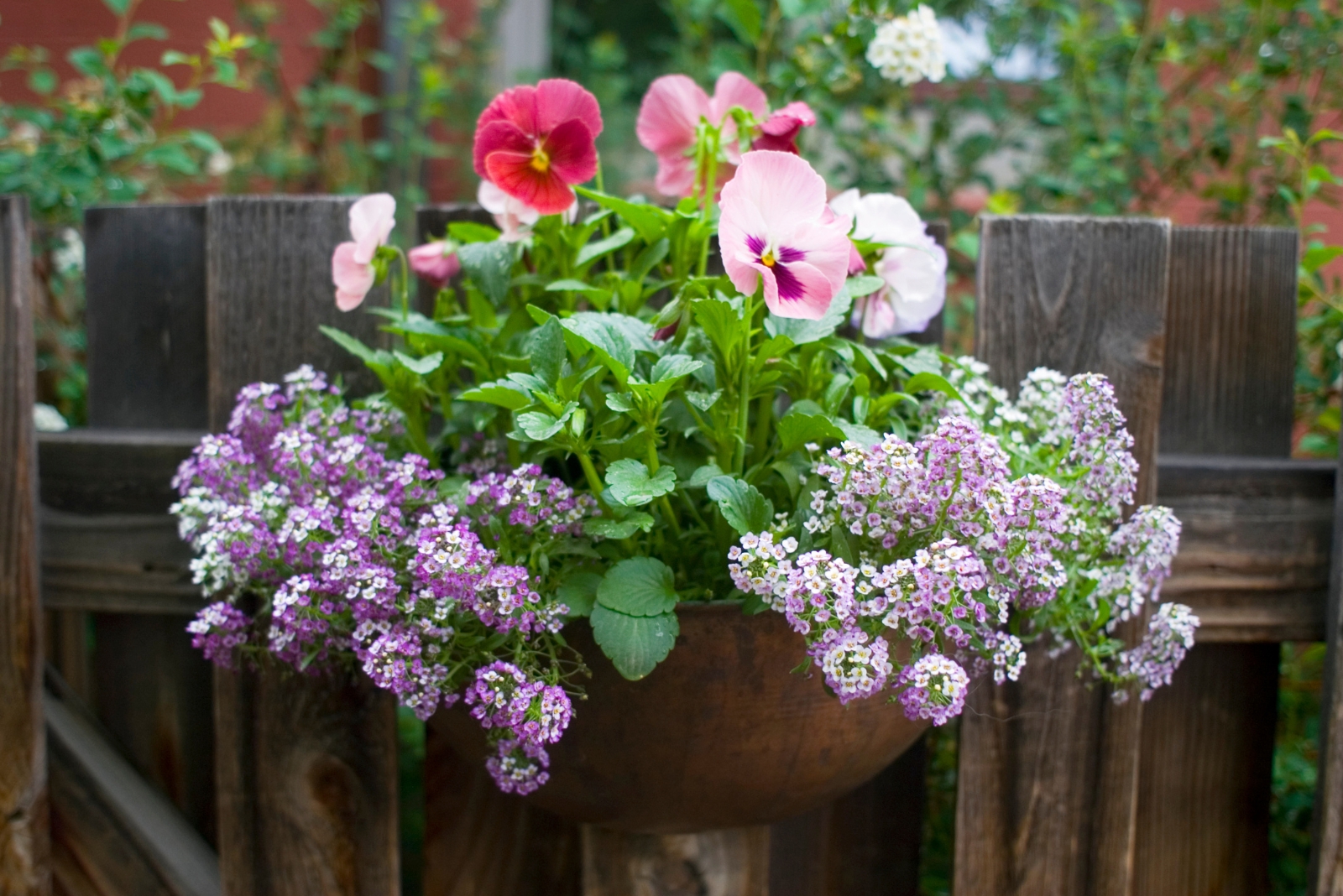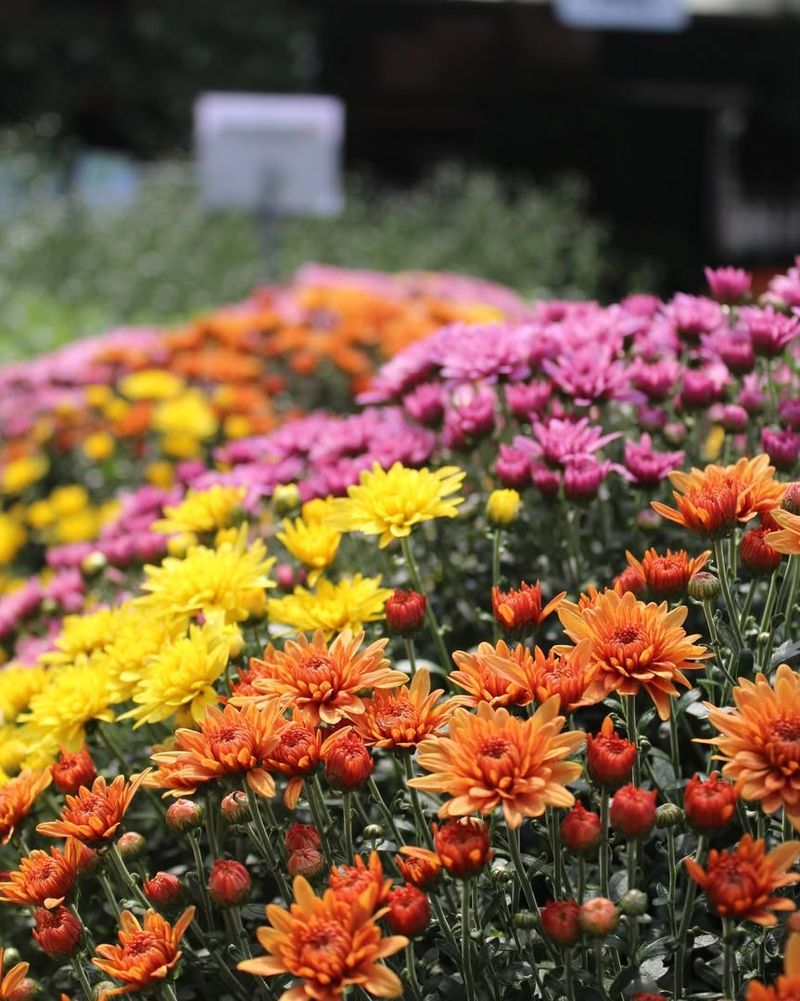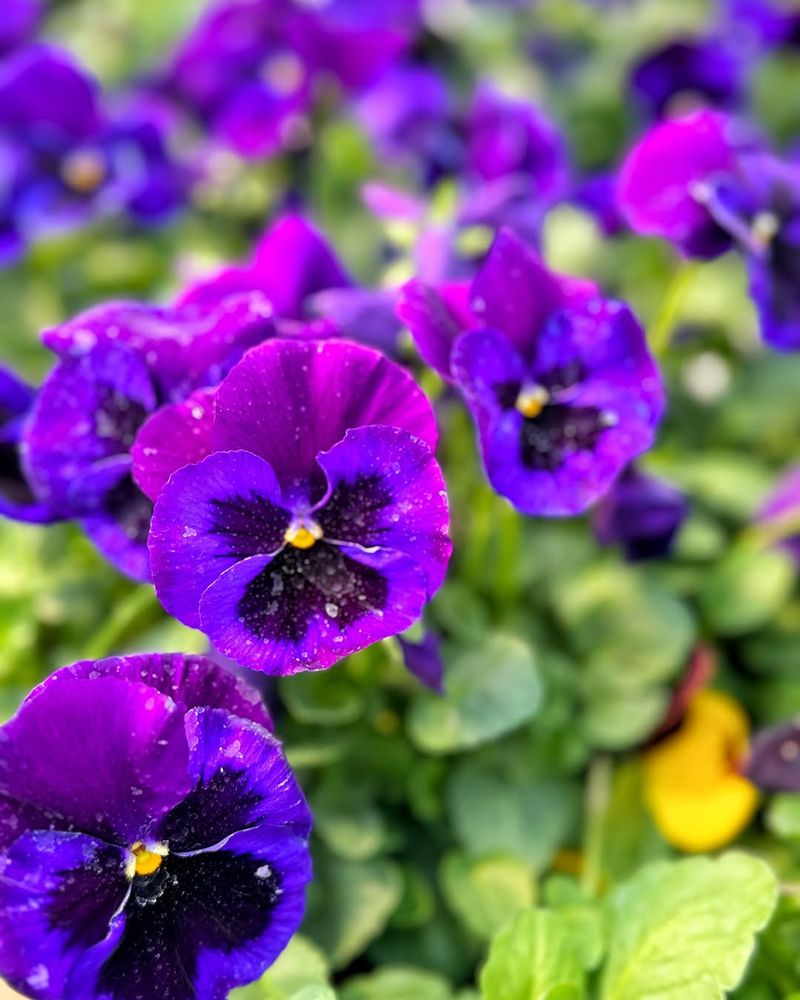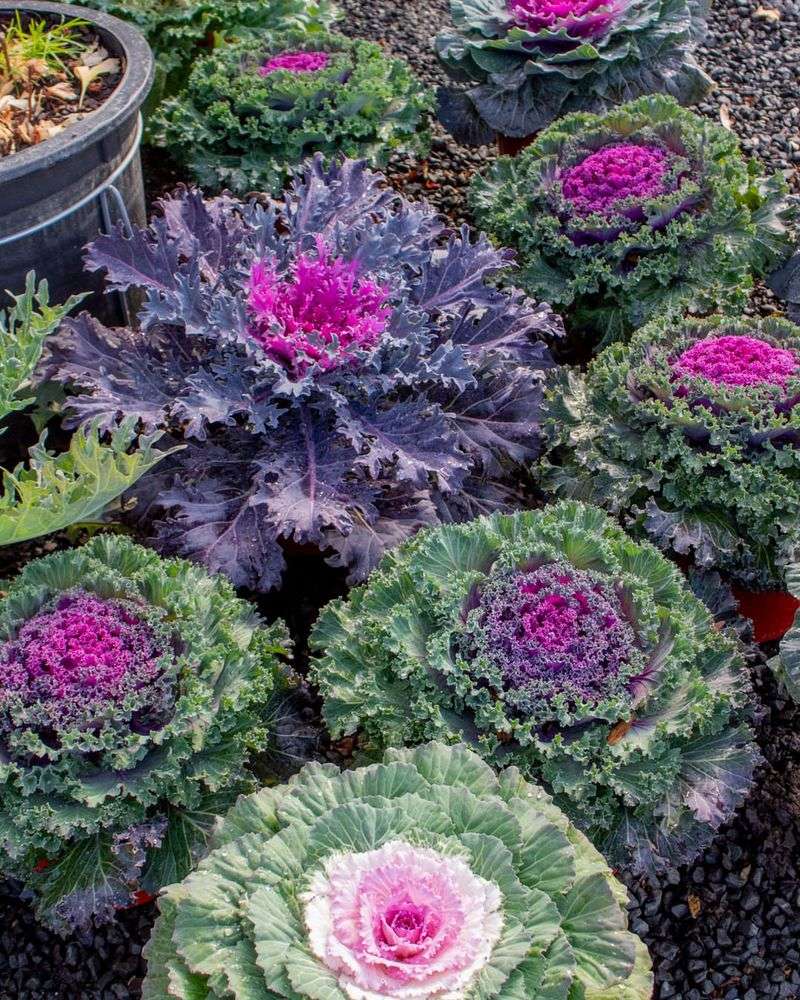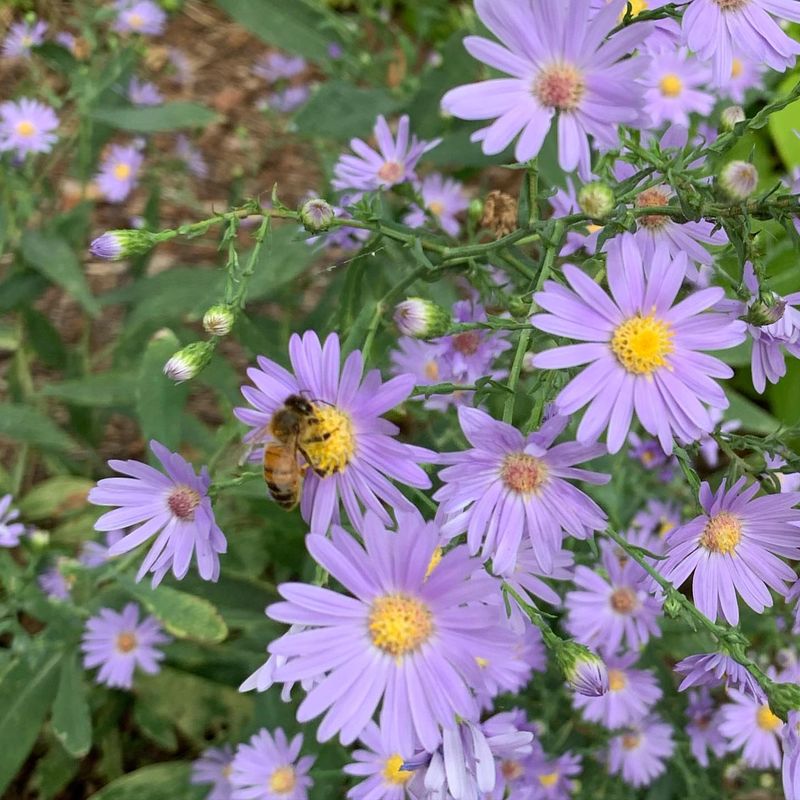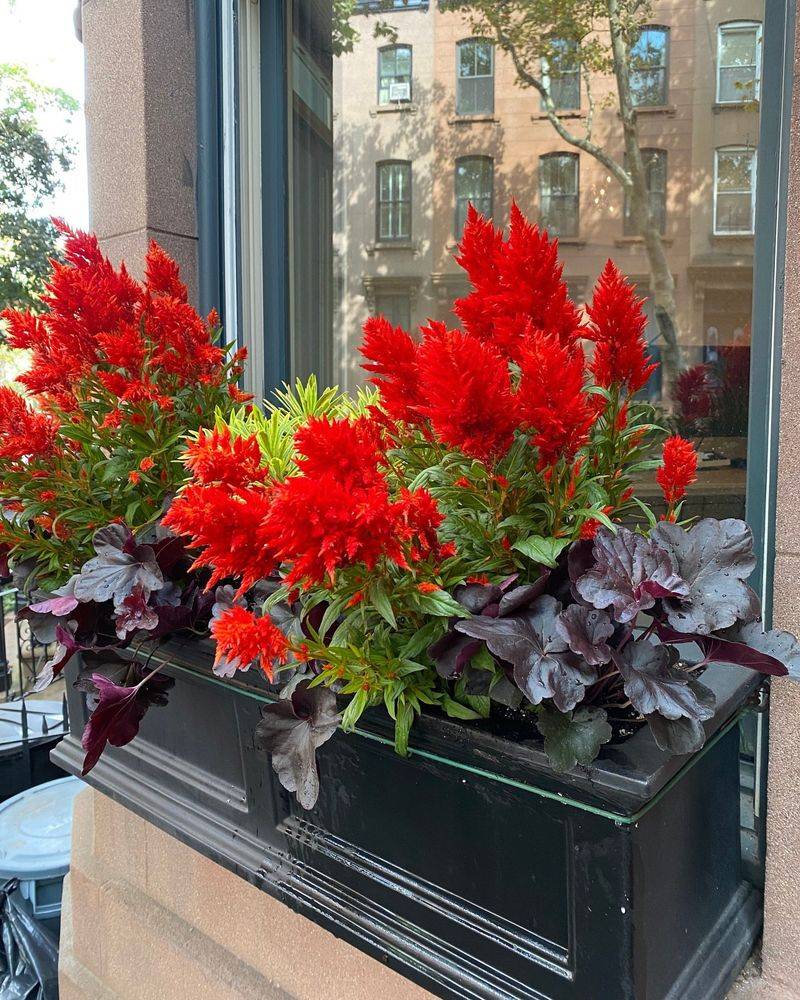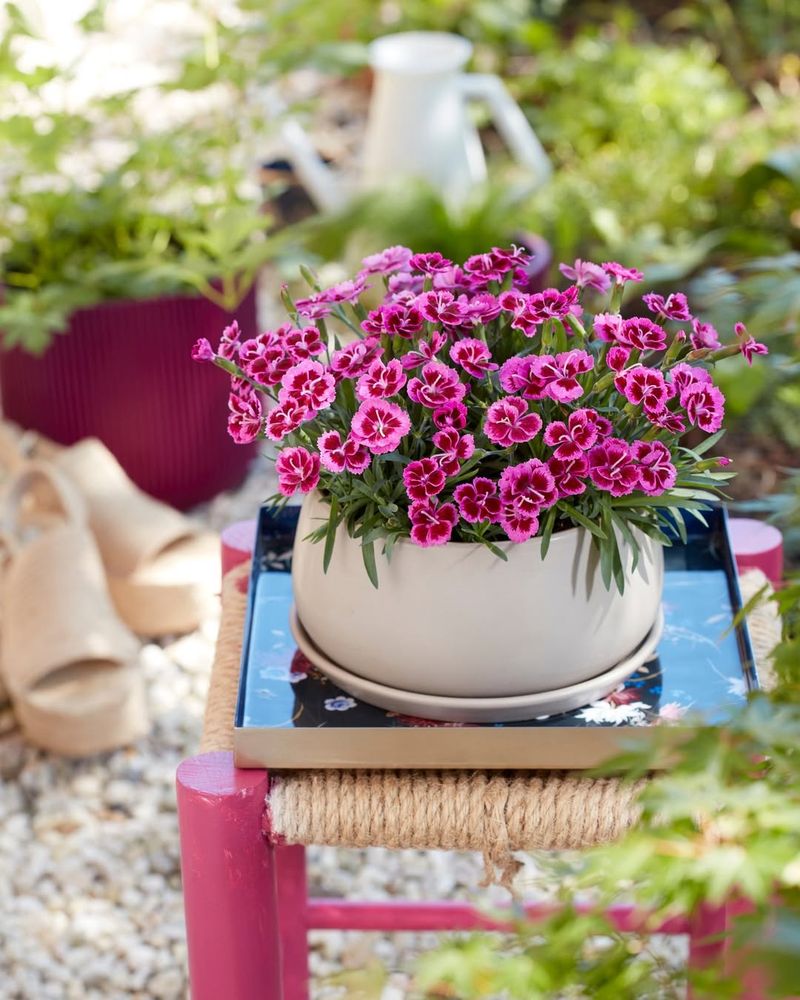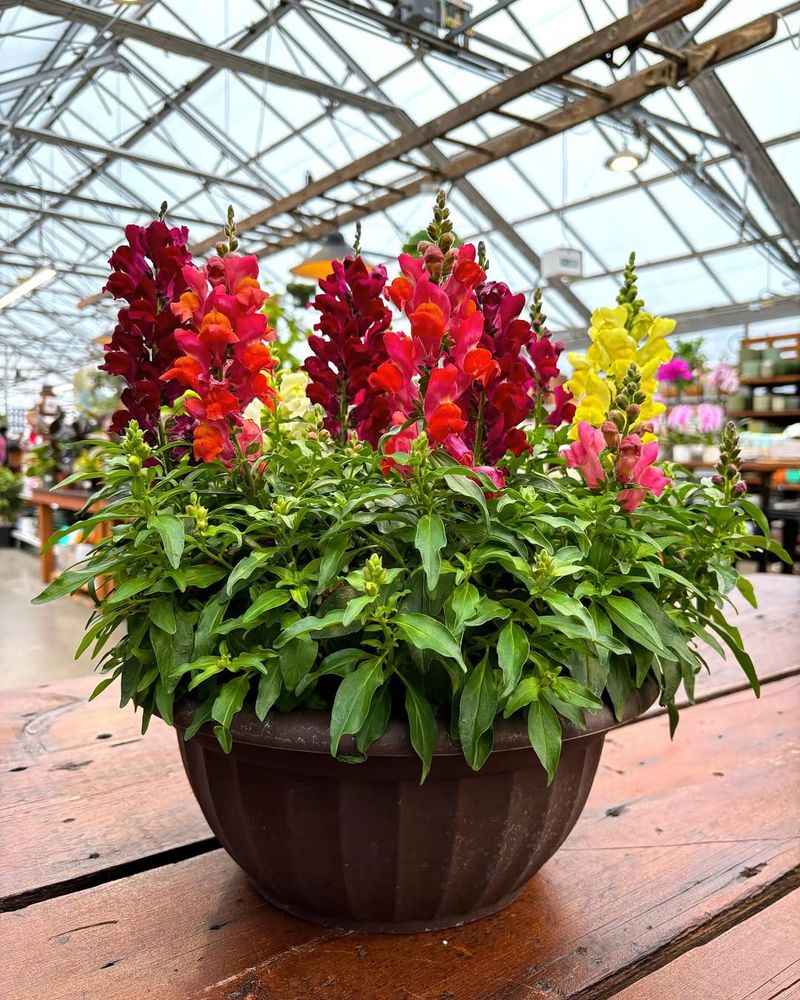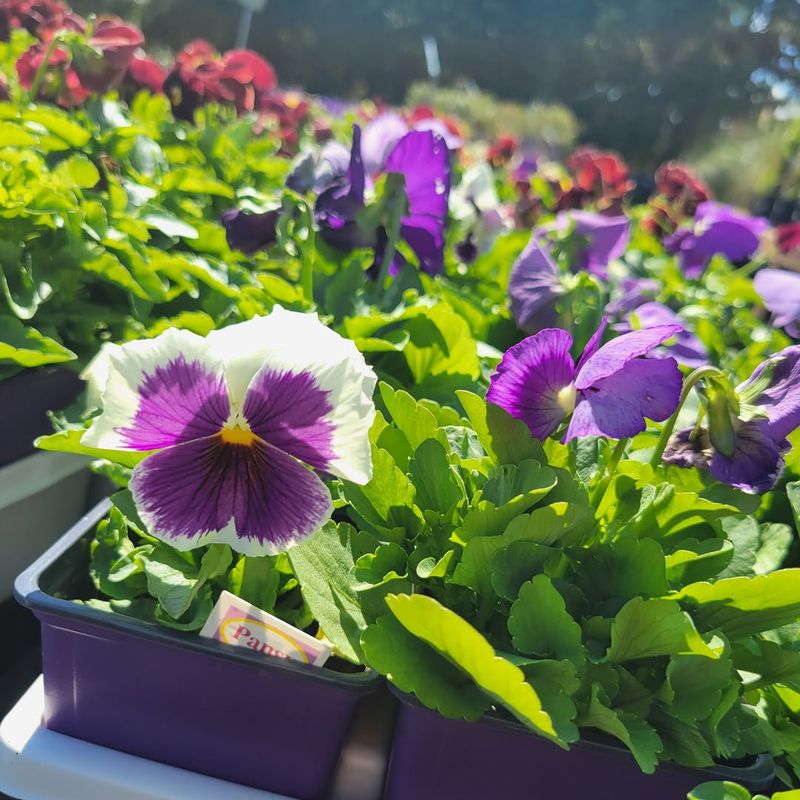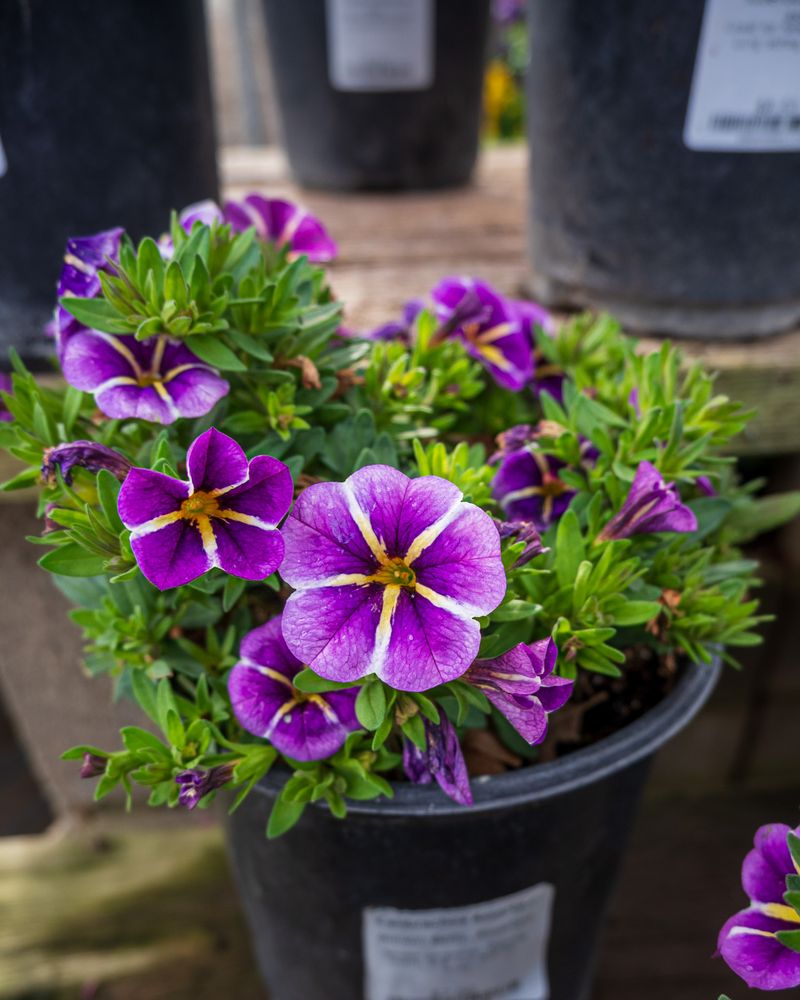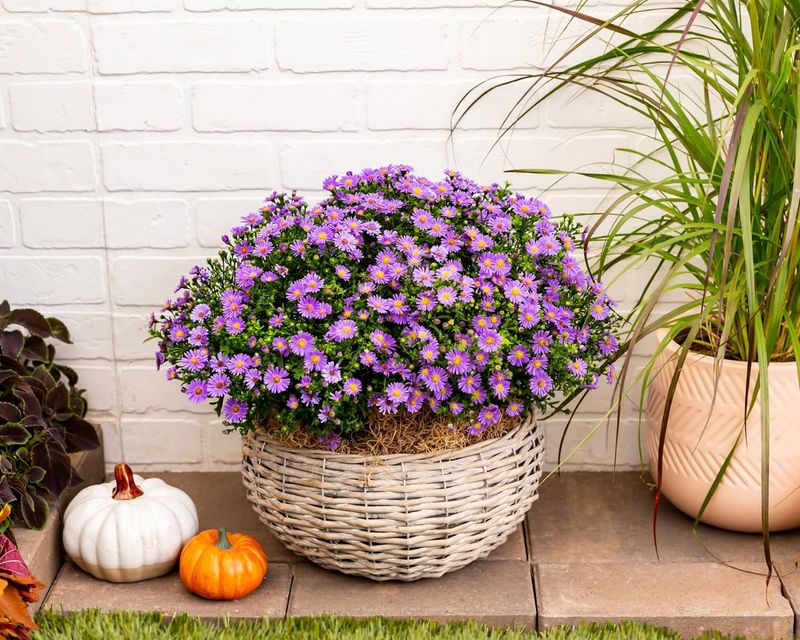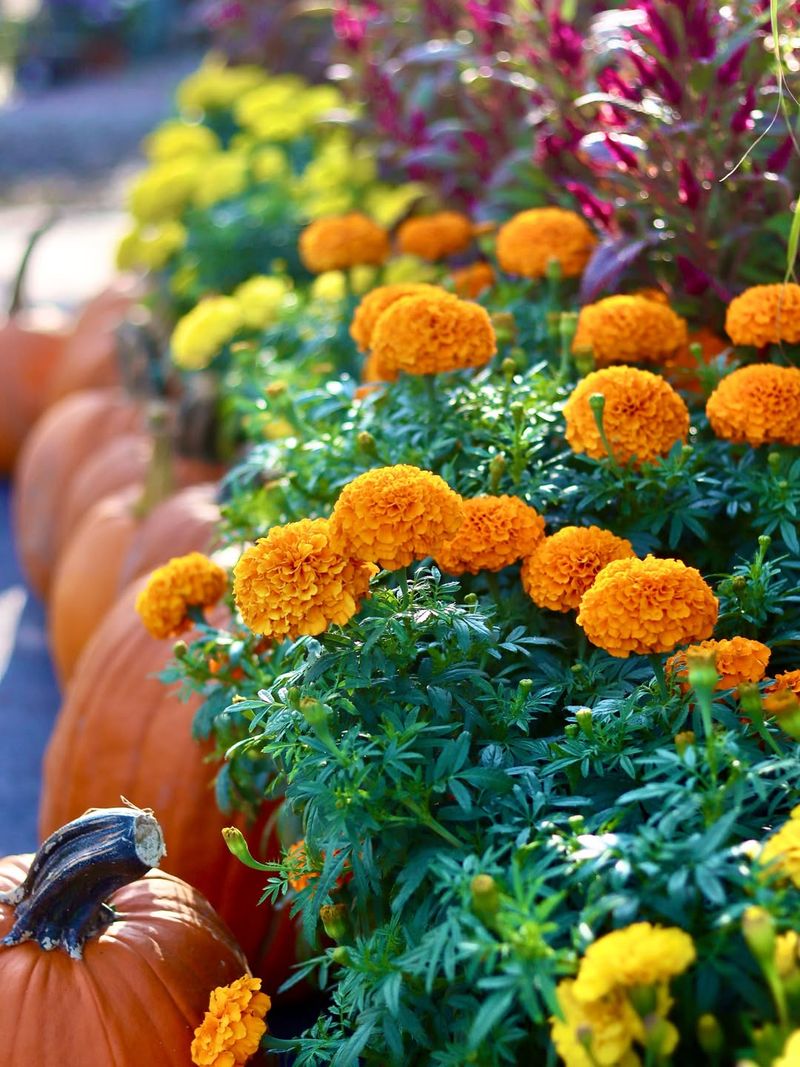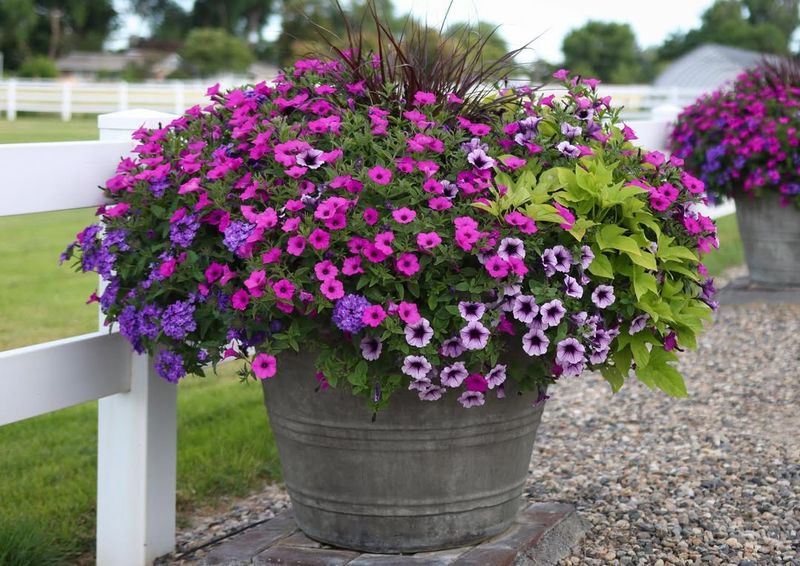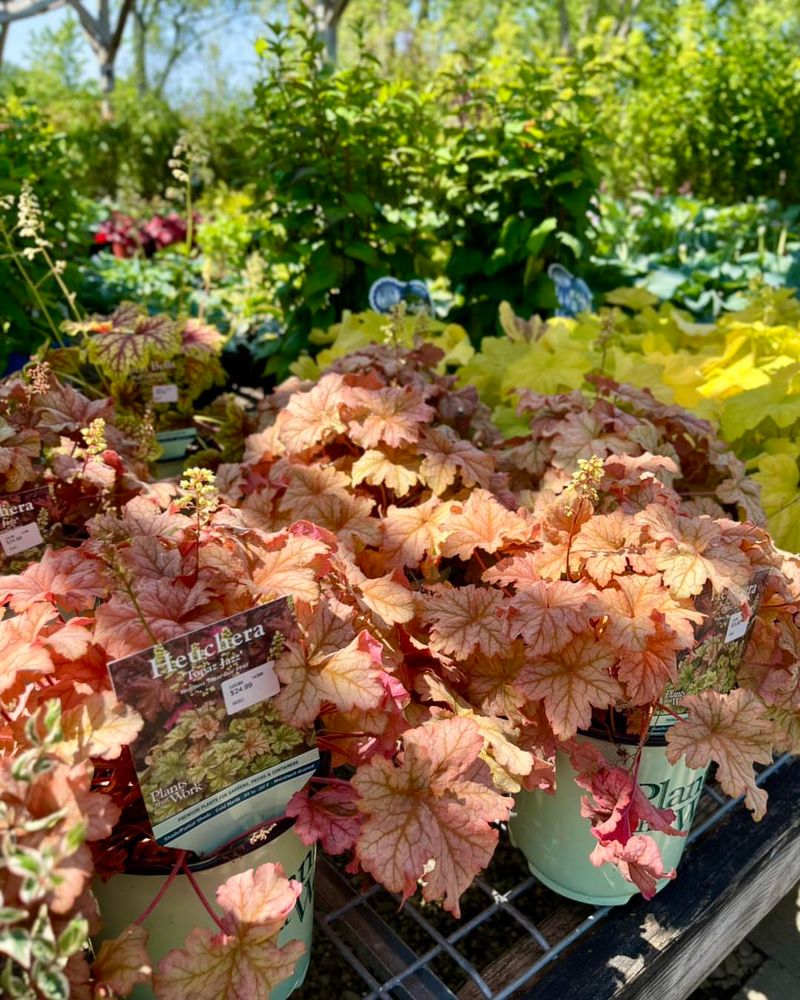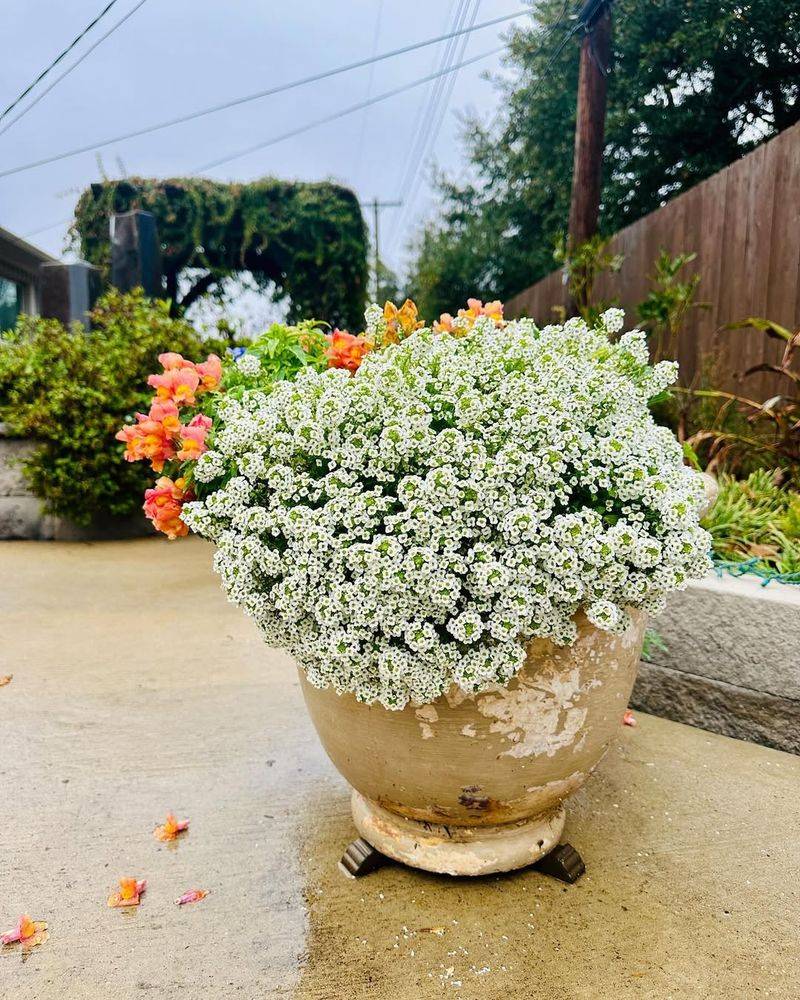When fall arrives in North Carolina, your porch or patio doesn’t have to look bare and boring. Container gardening offers a fantastic way to enjoy colorful blooms even as temperatures start dropping.
The best part is that many fall flowers actually prefer the cooler weather and will keep putting on a show right up until the first hard freeze hits your area.
1. Mums (Chrysanthemums)
Garden mums are the unofficial mascot of fall container gardening, and for good reason. Their dense, bushy growth produces hundreds of blooms in every autumn shade imaginable.
North Carolina’s mild fall climate suits them perfectly. Plant them in well-draining potting mix and place containers where they’ll get at least six hours of sunlight daily.
Deadheading spent flowers encourages more blooms. Water when the top inch of soil feels dry to keep plants thriving through November.
2. Pansies
With their cheerful little faces, pansies bring personality to any container arrangement. Cold-hardy and surprisingly tough, these flowers laugh at North Carolina light frosts that would wilt other bloomers.
They prefer cooler temperatures between 45-65 degrees, making fall their favorite season. Mix different colors in one pot for a rainbow effect, or stick with a single shade for elegance.
Feed them monthly with diluted fertilizer. Pansies will reward your minimal effort with continuous blooms straight through winter in most NC locations.
3. Ornamental Kale and Cabbage
Forget everything you know about vegetables because ornamental kale is all about stunning foliage, not dinner plates. Their rosettes of purple, pink, and cream leaves actually become more vibrant after a frost.
Growing up to 15 inches tall, they make excellent centerpiece plants in large containers. Pair them with trailing ivy or sweet alyssum for textural contrast.
They tolerate partial shade better than most fall bloomers. Water regularly but avoid overhead watering to prevent leaf spotting issues.
4. Asters
Butterflies can’t resist asters, making these daisy-like flowers a wildlife magnet for your North Carolina patio. Their star-shaped blooms come in shades of purple, pink, and white that practically glow in autumn sunlight.
Compact varieties like ‘Wood’s Purple’ work best in containers. Give them full sun and consistent moisture for peak performance.
Pinching back stems in early September encourages bushier growth. Asters typically bloom from September through October, providing nectar when pollinators need it most before winter arrives.
5. Celosia
Looking like flames frozen in time, celosia brings drama to fall containers with its unique crested or plumed flower heads. Heat-lovers that transition beautifully into autumn, they continue blooming until frost arrives.
Choose from brain-shaped cockscomb types or feathery plume varieties. Both thrive in full sun with moderate watering.
Their bold textures pair wonderfully with fine-leaved plants like asparagus fern. Celosia also makes excellent dried flowers, so cut some stems before the first freeze for indoor arrangements.
6. Dianthus
Spicy-scented dianthus offers old-fashioned charm with its fringed, carnation-like blooms. These tough little plants shrug off North Carolina cold snaps that would devastate less hardy flowers.
Their blue-green foliage looks attractive even when plants aren’t blooming. Space plants about six inches apart in containers filled with well-draining soil.
Dianthus prefers slightly alkaline conditions, so add a bit of lime if your potting mix is acidic. Deadhead regularly to encourage continuous flowering through late fall and beyond.
7. Snapdragons
Kids love squeezing snapdragon flowers to make the dragon mouths open and close. Adults appreciate how these vertical bloomers add height and structure to container arrangements.
Fall-planted snapdragons often outperform their spring counterparts because they prefer cooler weather. Choose dwarf varieties for smaller pots or tall types for dramatic impact.
Plant them deep to encourage strong root development. They’ll tolerate light frosts and keep blooming until temperatures drop into the low twenties, making them reliable performers across North Carolina.
8. Violas
Often confused with their larger pansy cousins, violas produce smaller blooms but many more of them. Their dainty flowers cover plants in a carpet of color that persists through surprisingly cold weather.
Violas actually prefer temperatures below 70 degrees, making them autumn superstars. They self-clean, meaning you don’t need to deadhead spent blooms.
Plant them densely for maximum impact in containers. Mix trailing varieties with upright types for dimension, and watch them bloom prolifically until hard freezes arrive in winter.
9. Calibrachoa (Million Bells)
Resembling miniature petunias, calibrachoa earns its Million Bells nickname by producing countless small blooms. These trailing plants spill beautifully over container edges, creating living waterfalls of color.
They handle North Carolina’s fall weather better than true petunias, which often struggle with humidity. Plant them in well-draining soil and fertilize weekly for best results.
Calibrachoa tolerates light frosts and continues blooming later than many summer annuals. Combine different colors in one basket for a confetti effect that brightens dreary autumn days.
10. Salvia
Hummingbirds making their fall migration stop at salvia flowers like tiny helicopters at a refueling station. The tubular blooms on upright spikes provide exactly the nectar these travelers need.
Both annual and perennial salvias work in containers. Blue and purple varieties offer cooling tones that complement warmer fall colors beautifully.
Salvia tolerates dry conditions once established but blooms better with regular watering. Pinch off spent flower spikes to encourage new growth, extending the blooming season well into November across most of North Carolina.
11. Marigolds
Grandma’s favorite flower still holds up today because marigolds simply work. Their sunny disposition and pest-repelling properties make them practical choices for fall containers.
French marigolds stay compact while African types grow taller and fuller. Both types bloom enthusiastically until a hard freeze in North Carolina finally stops them.
Their pungent scent keeps aphids and other pests away from neighboring plants. Deadhead regularly to prevent them from going to seed too quickly, and enjoy their golden glow throughout autumn months.
12. Petunias
Summer’s star performers don’t have to disappear when fall arrives in North Carolina. Petunias keep blooming beautifully through autumn if you give them proper care and protection from early frosts.
Wave and trailing varieties work especially well in containers, creating flowing displays. Newer varieties tolerate cooler weather better than older types.
Fertilize every two weeks and remove spent blooms to encourage continued flowering. When frost threatens, cover containers overnight with sheets or bring them under covered porches to extend the season even longer.
13. Coral Bells (Heuchera)
While technically grown for foliage rather than flowers, coral bells deserve a spot in fall containers for their stunning leaf colors. Burgundy, purple, caramel, and lime shades create interest without requiring blooms.
Their mounded growth habit works perfectly as filler or thriller plants depending on container size. Coral bells tolerate both sun and shade, offering flexibility in placement.
They’re perennials that can overwinter in North Carolina pots if protected. Pair them with flowering annuals for contrast, and appreciate how their foliage intensifies in color as temperatures drop.
14. Sweet Alyssum
Honey-scented sweet alyssum creates clouds of tiny flowers that soften container edges with delicate beauty. This low-growing annual reseeds readily and tolerates light frosts in North Carolina without complaint.
White varieties glow in evening light, while purple types add depth to color schemes. Plant alyssum as an underplanting beneath taller flowers or let it trail alone.
It prefers cooler weather and may even rebloom after summer heat stress. Water moderately and avoid heavy fertilization, which produces leaves at the expense of flowers during fall months.

